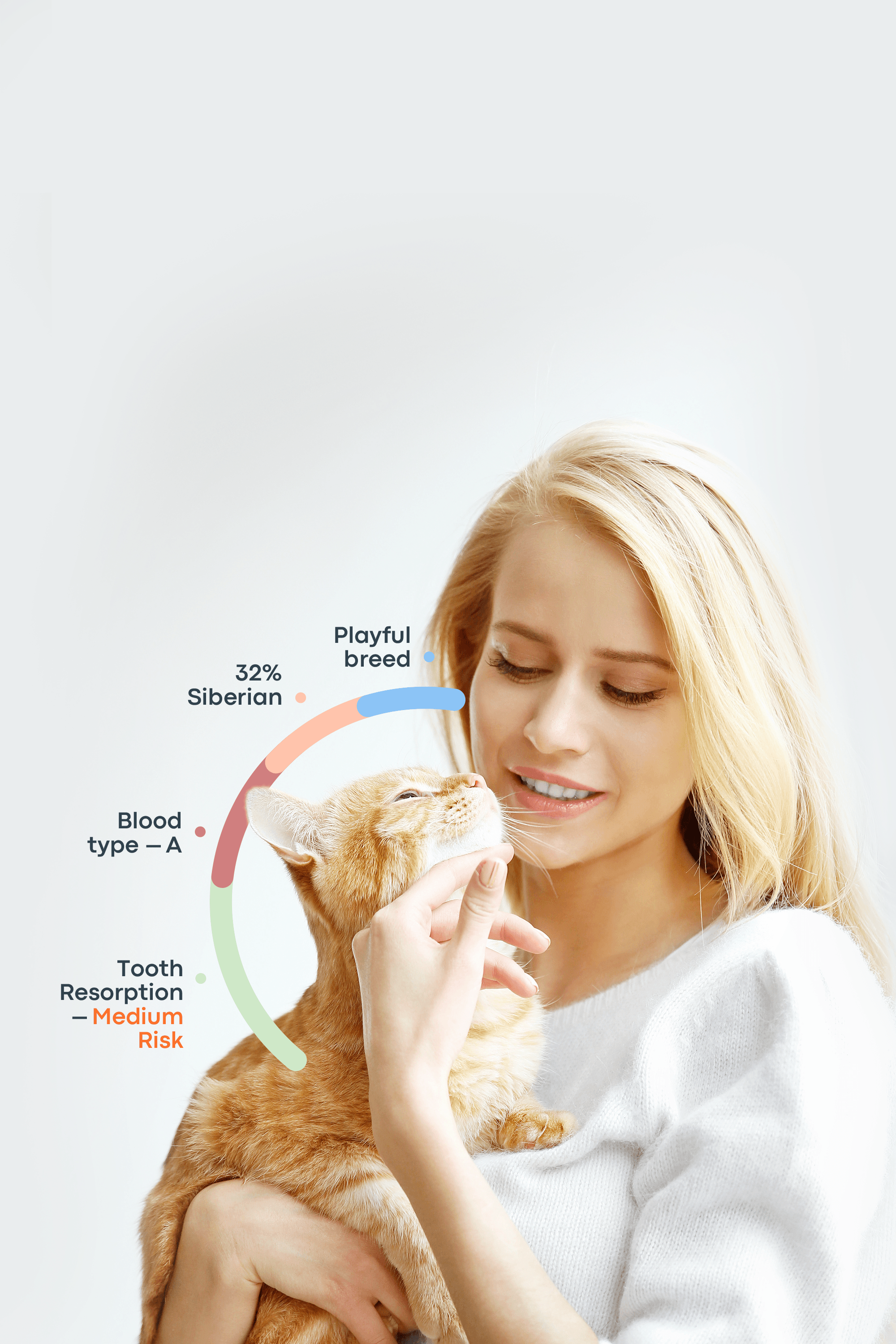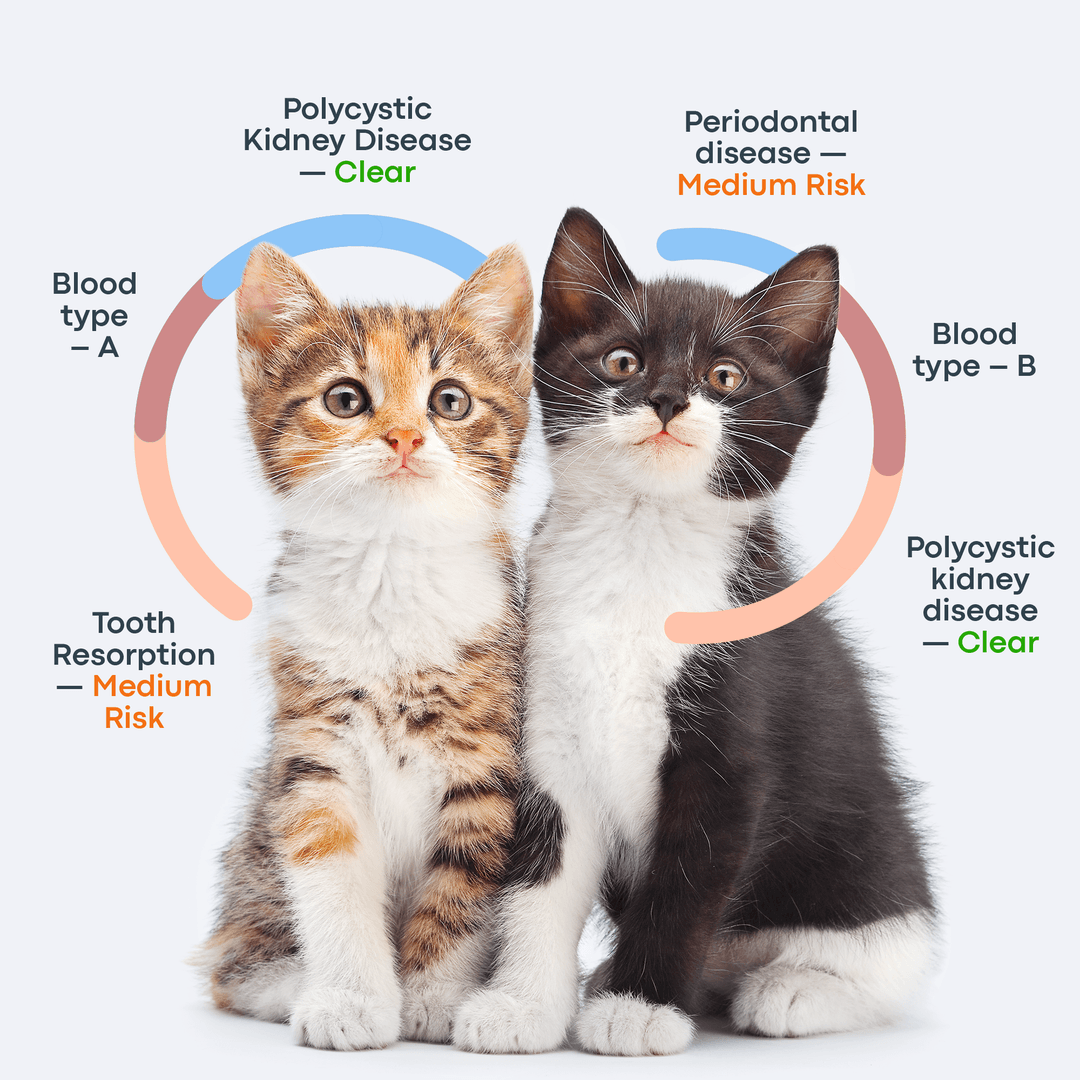What Does It Mean When Cats Groom Each Other?
In short: when cats groom each other, it’s usually a sign of trust, social bonding, and affection. So, why do cats groom each other? Here are some common reasons.
1. Social Bonding and Affection
When cats groom each other, it’s often a sign of trust and affection. Stray cats or those living in feral colonies groom one another as a way to strengthen social bonds between littermates. In multi-cat households, cats groom their housemates to show love, build trust, and deepen their bond.
2. Help Each Other Clean Hard-to-Reach Areas
Another answer to the question, “Why do cats bathe each other?” is to clean those hard-to-reach spots that even the most flexible feline cannot quite manage. According to Karingal Vet Hospital, cats are naturally very clean animals, almost obsessed with their personal hygiene, but even the most flexible felines need help sometimes.
While a cat can easily groom their paws and belly, areas like the back, neck, and top of the head often require assistance. Some cats team up and take turns grooming one another, which not only gets the job done but is also quite adorable to watch.

Why do cats lick inside each other’s ears?
Cats lick each other’s ears and inner ears for several reasons. Most commonly, it’s a form of affection and social bonding called allogrooming, which helps reinforce relationships within their group or colony.
Cats also lick earwax because it contains proteins and omega-3 fatty acids that many cats find tasty. Additionally, ear licking can serve as a form of scent marking to establish territory and social hierarchy — signaling close bonds between cats.
Finally, grooming ears can help relieve stress by releasing feel-good endorphins, comforting anxious cats. However, if the licking becomes excessive or obsessive, it may indicate stress or anxiety rather than normal affectionate grooming.
3. Establishing Dominance in Multi-Cat Homes
Grooming isn’t always about affection. Sometimes, it’s about hierarchy. In multi-cat homes or feral colonies, grooming can be a way for one cat to assert dominance. A higher-ranking cat may lick a subordinate cat to establish their place in the pecking order. It’s a subtle way of saying, “We’re good—but I’m still the boss.”
Interestingly, the opposite can happen too. A lower-ranking cat may groom a dominant cat to appease them, smooth social tension, or maintain peace in the group.
So how can you tell the difference between affectionate grooming and dominance grooming?
Experts note that dominance grooming usually involves the dominant cat initiating the licking, typically focused on the neck and head. It may be accompanied by assertive or even slightly aggressive body language—like pinning the other cat down, biting, or forcing the grooming interaction.
4. Maternal Grooming in Kittens
Another answer to “Why do my cats groom each other?” lies in maternal instinct. Mother cats lick their kittens for love, hygiene, and comfort. You may see them grooming their kittens or gently cleaning under their tails to help stimulate going to the bathroom, this is a normal and healthy part of kitten care
For the kittens, this early grooming feels safe and nurturing. It helps build a strong bond with their mother and even boosts their immunity by transferring good bacteria from the mother’s saliva.
This maternal grooming also lays the foundation for adult social grooming. Kittens often mimic their mother’s behavior—grooming each other and learning to groom themselves. That’s why it’s common to see young cats licking each other.
5. Stress Relief and Emotional Reassurance
Grooming isn’t just about hygiene—it’s also about emotional well-being. Cats often lick themselves or each other to reduce stress and promote relaxation. Shared grooming creates a comforting, familiar scent and releases feel-good endorphins that help them feel calm and connected.
In high-stress situations—like moving, vet visits, or meeting a new pet—cats may lick each other more often as a way to soothe nerves and rebuild a sense of unity. This behavior can de-escalate tension after conflicts and help restore harmony in both feral colonies and multi-cat homes.
So beyond being functional, cats grooming each other is also emotional support and reassurance—a quiet way of saying, “I’m here for you.”
6. Acceptance
Grooming is also a clear sign of acceptance. When a cat licks another, it’s their way of saying, “You’re part of my social group.” This behavior is especially common in households where cats were adopted at different times and are still adjusting to one another. In these cases, mutual grooming can mark a major turning point—it’s a milestone that signals peace, trust, and the end of initial tension or rivalry.
Once a cat no longer sees another as a threat, allogrooming cats behavior (mutual grooming) becomes a natural extension of that trust.
This behavior even extends to humans. If your cat licks you, it’s their way of expressing affection and saying, “I love you,” “I trust you,” and “You’re family.”
When to Be Concerned About Cat Grooming Behavior

Overgrooming and Signs of Stress
Excessive grooming—whether self-directed or toward other cats—can be a sign that a cat is stressed or anxious. In these cases, licking becomes a coping mechanism to relieve emotional tension. This behavior is often triggered by major changes in the home, such as moving, the arrival of a new baby, or the introduction of a new pet.
Over time, compulsive grooming can lead to physical problems like:
Lick granulomas
Patchy hair loss or bald spots
Redness, irritation, or blistering
Inflammation or open sores
Grooming as a Dominance Display
A dominant cat might constantly and aggressively lick a submissive cat to establish their authority as a leader. Cats grooming each other for dominance is a common behavior, accompanied by biting, scratching, and aggressive body language. The dominant cat might even pin or hold the other cat down.
Possible Health Issues (Parasites, Allergies)
While cats naturally spend up to 50% of their day grooming, excessive licking, biting, or scratching can signal an underlying medical problem. According to PetMD, some of the most common culprits include:
Fleas or mites: Flea bites are intensely itchy, and ear mites can lead to constant scratching or head shaking.
Food or environmental allergies: These can cause inflamed skin, itchiness, and overgrooming, especially around the belly, legs, or tail.
If you notice excessive grooming or any of the symptoms listed above, a veterinary visit is recommended. Your vet may suggest:
Deworming protocols
Flea control treatments
Allergy testing or dietary changes
Normal vs. Concerning Cat Grooming Behavior
Type of Grooming | What It Looks Like | What It Means | Action Needed |
Social/Allogrooming | Gentle licking, both cats relaxed | Bonding, affection, comfort | None |
Maternal Grooming | Licking kittens' fur and genitals | Hygiene, bonding, immune support | None |
Dominance Grooming | One cat pins or forces licking on another | Establishing hierarchy | Monitor for tension |
Overgrooming (Self or Other) | Constant licking, bald patches, redness | Stress, anxiety, OCD | Vet check, reduce stressors |
Medical-Related Grooming | Scratching, biting, ear/head shaking, discomfort signs | Allergies, fleas, parasites, skin infections | Vet visit and treatment |
Why Do My Cats Lick Each Other and Then Fight?

We hope this guide has helped answer the question, “Why do cats groom each other?” It's important for cat owners to distinguish between normal social grooming and aggressive grooming when they see their cat licking another cat.
In contrast, dominance grooming is done to establish authority. One cat may target the top of the head, back, or other hard-to-reach areas, often accompanied by tense body language—such as a stiff posture, flattened ears, or a flicking tail. The dominant cat may even pin the other down. If one cat feels overwhelmed, the situation can escalate into chasing or fighting.
If you notice one cat licking the other excessively or spot signs of stress, redirect their energy through positive outlets. Provide structured playtime using interactive toys, puzzle feeders, or climbing furniture to keep both cats mentally and physically stimulated. This can help maintain a peaceful dynamic and prevent grooming from turning into conflict.
Frequently Asked Questions
Why do my cats bite each other while grooming?
Grooming in cats can serve multiple purposes. While it’s often a sign of care and bonding, it can also indicate dominance. A grooming cat might bite the other if they aren't staying still, or to remove fleas, debris, or tangles in the fur. Gentle nips are usually normal, but watch for signs of tension or aggression.
Why does my cat lick my other cat but not me?
Cats lick one another to communicate, bond, and express social connection. While your cat may not lick you, they might show affection in other ways—like headbutting, purring, slow blinking, or following you from room to room.
Do cats groom aggressively to show dominance over another cat?
Yes, in some cases. While grooming is typically affectionate, it can also be used as a way to assert dominance. This is more common in multi-cat households where social hierarchies are at play. Look for accompanying signs like pinning, tense posture, or forced licking.
Do cats groom other animals?
Yes, cats can and do groom other pets—like dogs or rabbits—especially if they’ve formed a bond. This behavior helps share scent, strengthen interspecies relationships, and express trust, affection, and acceptance.


